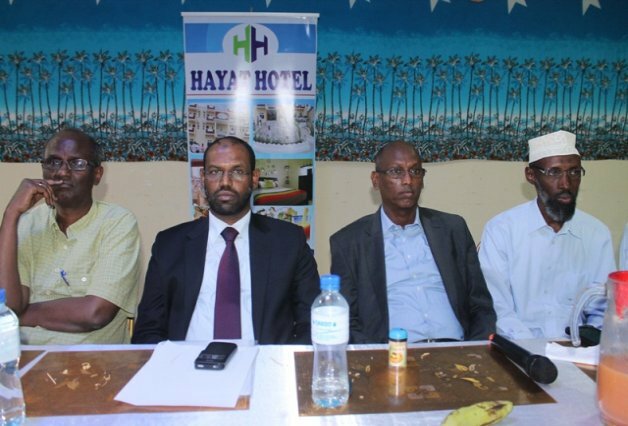When land is degraded, its people and their prospects are degraded too
 With so many of the world’s 48 least developed countries (LDCs) at the centre of global security concerns – from Afghanistan to Central African Republic to Mali, Nigeria and Somalia – wealthier states would be wise to support the actions LDC politicians agreed to (pdf) at a meeting they held in Benin last week.
With so many of the world’s 48 least developed countries (LDCs) at the centre of global security concerns – from Afghanistan to Central African Republic to Mali, Nigeria and Somalia – wealthier states would be wise to support the actions LDC politicians agreed to (pdf) at a meeting they held in Benin last week.
LDCs identified areas that can boost their economies if they take action: reorienting policies for agriculture, rural and infrastructure development, and for private investment; building small and medium-sized enterprises; diversifying commodities; investing in women and youth, and physical infrastructure; and mobilising their diaspora communities.
Support from external sources will be crucial. Global resources are finite, but that is not a justification for inaction. Rather, eradicating poverty and bolstering economic security in LDCs (pdf) calls for accurate, targeted action. So where should the international community aim its efforts?
Investing in a new form of agriculture that centres on sustainable land management is a significant area to target. About a quarter of people in LDCs live on severely degraded land. Most of them are trying to feed their families by cultivating land that produces far less than it once did. Though the proportion of undernourished people in LDCs has declined and food production has grown, the number of people living with hunger climbed to 260 million in 2010-12, from 201 million in 1990-92, according to the UN’s state of the LDCs report (pdf).
Many LDCs are on the frontline of climate change or are struggling to cope with security-related threats. Of the 48 countries, 40 are inhabited by people who, between 2008 and 2012, were displaced by extreme weather.
Land productivity could decline further as the impacts of climatic events increase. The latest Intergovernmental Panel on Climate Change report predicts crop yields will decline in every decade this century. It is estimated that two-thirds of African land is already degraded to some degree (pdf), which affects more than 485 million people. Improving land and water management on a quarter of sub-Saharan Africa’s 300m hectares (741m acres) of cropland could increase food production by 50%, according to the World Resources Institute (pdf).
In addition, LDCs face a stark demographic challenge. The youth population – aged 15-24 – in these countries is expected to rise to 300 million by 2050, from 168 million in 2010, according to the UN. Such a fast-growing young population makes rural employment crucial for easing rural-urban migration.
Land issues will nearly always involve a trade-off between social, economic and environmental needs, and should be managed to best serve these competing demands. Investing in agricultural practices that have left more than half of the global cropland degraded is not only unsustainable, but unconscionable – particularly when viable alternatives exist.
Farmers and herders using sustainable land management practices are keeping degradation to a minimum, increasing productivity and nursing degraded land back to health while keeping their carbon footprint low. Farmers and scientists are finding that mixing traditional and scientifically tested land use techniques multiplies the effect.
Farmers in Ethiopia and Niger, both LDCs, have recovered the productivity of entire regions. More than 5m hectares have beenrestored in Niger’s Zinder province (pdf), boosting food security for more than 2.5 million people. More than 1m hectares have been restored in Tigray, Ethiopia.
These countries are on the path to meeting growing food demand and producing surpluses for export. The large-scale land improvements emerging are strengthening the resilience of small-scale farmers and herders to climate change. Many have learned from the recovery of theLoess Plateau in China how to create employment opportunities not just in farming and food production, but through standalone schemes designed to recover degraded land.
One common practice is to dig pits across the fields and bury moist plant waste that over time decomposes to improve soil fertility. Just before the rains, many small half-moon shapes are curved out on the ground to catch rain water. A few, often indigenous trees or tree seedlings that are naturally sprouting from the ground, are grown on the same field as the food crops. The trees are pruned selectively to enhance and speed up their growth.
Because they are based on local resources, the practices are cheap and easy to adopt and sustain on a large scale. But farmers land rights need to be secure.
LDCs will reap the immediate gains, but such cooperation could have tremendous benefits in donor countries too. First, employment creation in LDCs could reduce poverty, transforming young people into consumers of the products from developed countries, and, in turn, reducing the incentive to migrate. Also, by acting now, Europe and north Africa could forestall the possibility of an estimated 60 million people moving to within their borders from the desertified areas of sub-Saharan Africa by 2020.
Second, increasing food production through sustainable land management in LDCs would enhance stability in the global food market and reduce the land-degradation footprint from developed country imports.
Third, sustainable land-use practices are efficient at capturing carbon back into the soil and can be fairly competitive at storing carbon.
Land is a vital natural resource. A strategic focus that transforms how we use it, with agricultural reform in LDCs as a starting point, can help resolve some of the global problems demanding our urgent attention.
Source: Guardian
Comments
comments
 Calendar
Calendar




































